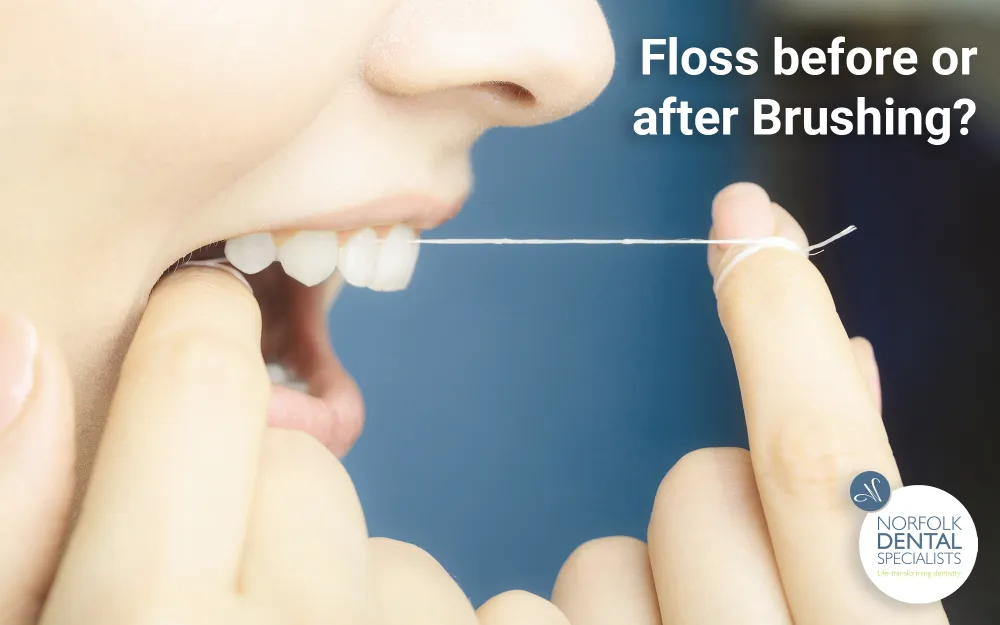Should You Floss Before or After Brushing Your Teeth?

Developing good teeth brushing habits for your home dental care routine is the single most important thing you can do in order to keep your teeth and gums healthy. Flossing between the teeth with dental floss or a WaterPik is an essential part of that routine, but should you floss before or after brushing your teeth? Our hygienists have a recommended order to ensure the best dental care. For some of our patients, the order is counter-intuitive to what they have been doing most of their lives, so we thought we’d share best practice here on the Norfolk Dental Specialists’ blog.
1. Rinse with mouthwash
The fresh breath tingle of a strong minty mouthwash is such a nice feeling that many people finish their dental care routine with a good rinse. However, all this achieves is washing away all the fluoride residues from the toothpaste you have just applied. If you want to use mouthwash, use it before the other elements of your dental hygiene routine. It is especially effective first thing in the morning to rinse away bacteria that have built up overnight.
2. Interdental cleaning
This is the process of removing plaque and food debris from the tight spaces between your teeth, where your toothbrush will not reach. Interdental cleaning can be done with dental floss, interdental brushes, or a WaterPik. We recommend doing it before brushing your teeth, because it helps to loosen and dislodge small food particles and the accompanying bacteria which will then be removed by brushing.
3. Brush for 2 minutes after flossing
Brushing your teeth for 2 minutes twice a day is the standard recommended by most dentists. Our hygienists recommend using a softer-bristled toothbrush to apply a fluoride toothpaste. Brush gently in circular motions. Make sure you cover all surfaces of your teeth, including the front, back, and chewing surfaces. Brushing your teeth after flossing helps to remove any remaining plaque and bacteria, and gives your teeth a polished look.
4. Scrape your tongue
The final step of our recommended mouth hygiene routine that shouldn’t be overlooked is the advice to finish by scraping your tongue with a tongue scraper or a spoon. This helps to remove any bacteria, food residue, or dead cells that might be coating your tongue and causing bad breath. You should scrape your tongue gently starting at the back and scraping all the way down to the tip.
We hope this post has helped you understand the best order for your dental hygiene routine. If you have any questions or concerns about your oral health, or if you would like to book an appointment with one of our hygienists, please contact us at Norfolk Dental Specialists. We are always happy to help our patients achieve a healthy and beautiful smile.


